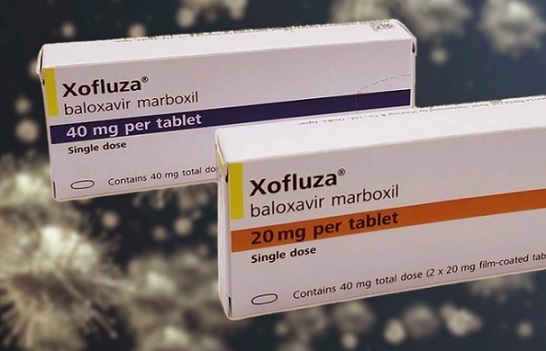Japanese Study Finds That Baloxavir Outperforms Oseltamivir in Treating Influenza Among Children
Nikhil Prasad Fact checked by:Thailand Medical News Team Mar 29, 2025 3 weeks, 2 days, 16 hours, 47 minutes ago
Medical News: A new Japanese study has made waves in the pediatric healthcare community after revealing that the antiviral drug Baloxavir Marboxil significantly outperforms Oseltamivir in treating children infected with the influenza virus. The findings offer hope for quicker recovery and reduced viral transmission in children, a group often hit hardest during seasonal flu outbreaks.
 Japanese Study Finds That Baloxavir Outperforms Oseltamivir in Treating Influenza Among Children
Japanese Study Finds That Baloxavir Outperforms Oseltamivir in Treating Influenza Among Children
The comprehensive clinical trial was conducted by researchers from Hokkaido University Hospital, Nihon University School of Medicine, Kawasaki Medical School, and Shionogi & Co., Ltd. - a leading pharmaceutical company in Japan. These experts compared the clinical outcomes and safety of single-dose Baloxavir with a five-day course of Oseltamivir in children aged 6 to 12 years.
The study was motivated by the need for faster-acting and more efficient flu treatments for children. With influenza causing millions of severe infections and hundreds of thousands of deaths globally each year, pediatric patients remain a particularly vulnerable group. This
Medical News report sheds light on why Baloxavir may now be a more favorable treatment option, especially in regions like Japan where flu seasons are intense and widespread.
Faster Symptom Relief and Shorter Viral Shedding Time
A total of 199 children were enrolled, with 195 ultimately included in the final analysis. Participants were randomly divided into two groups—128 children received Baloxavir as a single dose, while 67 were treated with Oseltamivir twice daily for five days. The most common flu strains in the study were A/H3N2 (50.8%), B (37.4%), and A/H1N1pdm (10.3%).
The primary measurement of effectiveness was the time to illness alleviation (TTIA), defined as the period from the start of treatment until the disappearance of key flu symptoms like fever, cough, and nasal congestion for at least 21.5 hours. The results were striking. Children in the Baloxavir group had a median TTIA of just 44.8 hours, significantly faster than the 72.2 hours observed in the Oseltamivir group.
In addition to faster symptom relief, Baloxavir also drastically reduced the time during which children were contagious. The median time to cessation of virus shedding was 48 hours for Baloxavir, compared to a lengthy 192 hours for Oseltamivir. This reduction in contagiousness could help lower the risk of household transmission - a crucial factor during flu outbreaks.
Virus Load Dropped More Rapidly with Baloxavir
The study also measured changes in viral load. By Day 2 of treatment, children receiving Baloxavir showed a much sharper decline in virus levels in their nasal swabs compared to those on Oseltamivir. Specifically, the mean drop in viral titer was −4.72 log10 TCID50/mL in the Baloxavir group, versus −2.05 in the Oseltamivir group. By Day 10, both drugs had reduced virus levels significantly, but Baloxavir demonstrated a faster onset of act
ion, which is crucial in limiting transmission.
Interestingly, a small number of children (12 in total) developed mutations in the virus known as PA/I38X, which are linked to resistance against Baloxavir. However, these mutations did not appear to significantly affect recovery time or symptom rebound. In fact, some patients with the mutation recovered faster, though more data is needed to confirm this.
Side Effects and Safety Profile
No deaths or serious adverse events occurred in either treatment group. However, minor adverse events were slightly more common in the Baloxavir group (19.4%) than in the Oseltamivir group (10.1%). Most of these were mild gastrointestinal symptoms such as vomiting and diarrhea. Two cases of abnormal lab values - decreased platelet count and presence of blood in the urine - were noted in the Baloxavir group, but they were not deemed clinically serious.
Despite this, researchers concluded that Baloxavir was well tolerated overall, and no new safety issues were identified.
Stronger Against Multiple Flu Strains
Subgroup analysis showed that Baloxavir performed better than Oseltamivir across multiple influenza strains. For those infected with A/H3N2, TTIA was 43.7 hours in the Baloxavir group compared to 72 hours with Oseltamivir. Among those with type B virus, Baloxavir led to recovery in 65.5 hours versus 90.5 hours for Oseltamivir. Even among children infected with A/H1N1pdm, Baloxavir delivered slightly faster recovery.
The researchers also highlighted a unique case in which an 11-year-old boy with a pre-existing mutation in the flu virus responded well to Baloxavir, showing both clinical improvement and viral suppression, without infecting his family members.
Conclusion: Baloxavir is Emerging as a Superior Option
This well-structured Japanese trial offers robust evidence that Baloxavir, a single-dose antiviral, is more effective than the older Oseltamivir regimen in helping children recover from the flu more quickly and in reducing viral spread. The rapid drop in symptoms and contagiousness, combined with a manageable safety profile, makes Baloxavir a compelling treatment option for children between 6 and 12 years of age.
Given the potential public health benefits, especially in school-aged children who often drive flu outbreaks, this study suggests that Baloxavir could become the preferred choice for treating pediatric influenza in the future. With a simpler dosing regimen and better outcomes, parents and healthcare providers may find it easier and more effective to manage flu infections.
The study findings were published in the peer-reviewed journal: Infectious Diseases and Therapy.
https://link.springer.com/article/10.1007/s40121-025-01131-4
For the latest on Influenza, keep on logging to Thailand
Medical News.
Read Also:
https://www.thailandmedical.news/news/beta-glucans-found-in-mushrooms-can-reprogram-neutrophils-to-combat-influenza-a-viruses
https://www.thailandmedical.news/news/study-uncovers-how-childhood-flu-exposure-shapes-future-immunity
https://www.thailandmedical.news/news/how-neurotropic-viruses-such-as-influenza-hiv-herpes-affect-the-human-brain-to-cause-neuropsychiatric-disorders
https://www.thailandmedical.news/articles/influenza-or-flu
https://www.thailandmedical.news/articles/h5n1-avian-flu
https://www.thailandmedical.news/pages/thailand_doctors_listings
